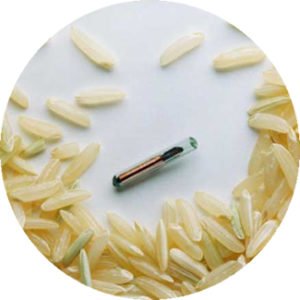Microchipping your pet
Microchips for pets have become the standard. You can always have the assurance that your pet is identified. What if your home caught on fire or you had a break in? Your pet would try to escape. You need help relocating your pet. Remember a ID tag on the collar is still important. A HomeAgain Chip is permanent. And for international travel it is a requirement. Lost pets need identification.

Dog and cat microchipping is a simple procedure. A veterinarian simply injects a microchip for pets, about the size of a grain of rice (12mm), beneath the surface of your pets skin between the shoulder blades. The process is similar to a routine shot, takes only a few seconds, and your pet will not react any more than he would to a vaccination. No anesthetic is required.
A HomeAgain microchip is permanent pet ID. The microchip itself has no internal energy source, so it will last the life of your pet. It is read by passing a microchip scanner over the pets shoulder blades. The scanner emits a low radio frequency that provides the power necessary to transmit the microchips unique cat or dog ID code and positively identify the pet.
HomeAgain is the only dog & cat microchipping product on the market today that has the Bio-Bond patented anti-migration feature to help ensure that the microchip will stay in place so that it may be easily located and scanned. If your pet gets lost and is taken to an animal shelter or veterinarian, they will scan the microchip to read its unique dog or cat ID code. This is the number used by HomeAgain to identify the pet and retrieve your contact information, which is used to contact you and reunite you with your pet.
via

